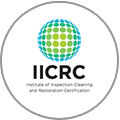Water damage can be frustrating and costly, but not all water damage is created equal. Some damage can be quickly repaired, while others can be permanent. How do you know if water damage is permanent?
In this section, we will discuss the signs to look out for when assessing water damage in your home. By understanding the indicators, you can take the necessary steps to prevent further damage and protect your home.
Key Takeaways:
- Water damage can be permanent or temporary.
- Understanding the indicators of permanent damage is crucial for taking appropriate action.
- Mold growth and structural damage are key signs of potential permanence.
- Electrical hazards are also a concern in water damage situations.
- Assessing the severity of the damage is important before making any repairs.
Common Causes of Water Damage
Water damage can happen to any home, and the causes can vary widely. Understanding the common causes is crucial for identifying potential permanent damage. Here are some of the most common reasons for water damage in homes:
| Cause | Description |
|---|---|
| Leaking pipes | Old, damaged, or poorly maintained pipes can leak and cause water damage. |
| Roof leaks | Missing or damaged shingles, improper installation or poor maintenance of the roof can lead to water seeping into the home. |
| Flooding | Heavy rain, melting snow, or overflowing bodies of water can cause significant flooding and water damage. |
| Basement seepage | Improperly waterproofed basements can allow water to seep in and cause damage. |
| Appliance leaks | Washing machines, water heaters, and dishwashers can leak and cause water damage if not properly maintained or installed. |
If you are experiencing water damage in your home, it’s crucial to identify the cause and take action quickly to prevent further damage. Remember, the longer the water sits, the higher the chances of permanent damage, including mold growth and structural issues.
Stay tuned for the next section where we will discuss the visible signs of water damage in your home.
Visible Signs of Water Damage
Water damage can present itself in a variety of ways, and recognizing the visible signs can help you determine the extent of the damage. Some common signs of water damage include:
| Visible Signs | Explanation |
|---|---|
| Discoloration on walls or ceilings | Water damage can cause staining and discoloration on walls and ceilings. These stains may vary in color and can be a sign of permanent damage. |
| Musty or damp odors | Water damage can cause a musty or damp smell in your home. This odor can be a sign of prolonged water damage and mold growth, which can be hazardous to your health. |
| Warped or buckling floors | Water damage can cause your floors to warp or buckle. This can be a sign of permanent structural damage and may require extensive repairs. |
It’s crucial to address visible signs of water damage immediately to prevent further damage and potential hazardous mold growth. If you notice any of these signs in your home, consider consulting with a professional to assess the extent of the damage.
Assessing Structural Damage
When dealing with water damage, assessing the structural integrity of your home is vital. Structural damage is a key indicator of potential permanence, and addressing any structural issues must be a top priority to prevent further damage.
Expert tips for assessing structural damage include:
- Checking for any cracks in the walls or foundation
- Looking out for bowed walls or ceilings
- Examining the roof for leaks or damage
Additionally, you can use a moisture meter or infrared camera to identify hidden moisture pockets. These tools can help you detect structural damage that is not visible to the naked eye.
If you detect any structural damage, it is best to seek professional help immediately. A qualified contractor or engineer can help you assess the severity of the damage and work with you to develop a plan of action to address it.
Mold and Mildew Growth
One of the most significant issues with water damage is mold and mildew growth. These fungi thrive in damp conditions and can cause severe damage to your home. If left unchecked, mold growth can be a sign of permanent damage, affecting your home’s structural integrity and your family’s health.
The longer water damage is left untreated, the greater the risk of mold and mildew growth. It only takes 24-48 hours for mold spores to start growing on damp surfaces, and once they start spreading, they can be challenging to remove completely.
Assessing the severity of the mold and mildew growth is crucial for determining the extent of the permanent damage. If you suspect mold growth, it’s vital to seek professional help to assess the damage and develop a remediation plan as soon as possible.
Acting fast and taking the necessary actions can help prevent further damage and protect your home from permanent water damage. It’s essential to address the cause of the water damage and remove any affected materials to prevent further mold growth.
Evaluating Electrical Hazards
When it comes to water damage in your home, electrical hazards can pose a significant threat, and evaluating these hazards is crucial in determining the permanence of the damage. Even small amounts of water can create an electrical danger, so it’s essential to approach any water damage with caution. Here are some steps to evaluate electrical hazards:
- Turn off the power: If you suspect any electrical hazards, immediately turn off the power supply to the affected area. This will prevent any accidental electrocution while you assess the damage.
- Assess the extent of the damage: The severity of the water damage can determine the level of electrical hazards. For example, a small puddle near an electrical outlet may not pose a significant threat, while a large body of water that has soaked through walls and carpets could be very dangerous.
- Look for exposed wiring: If any wires are exposed, turn off the power supply to the affected area and contact a professional immediately. Exposed wiring can cause electric shock and spark a fire.
| Signs of Electrical Hazards | Potential Implications |
|---|---|
| Hot or warm outlets or switches | This could indicate that wires are overheating, which can cause a fire. |
| Buzzing or crackling sounds | These may signify electrical surges or arcing, which can cause fires or damage appliances. |
| Water near electrical outlets or appliances | This could cause electrocution or damage appliances, potentially leading to a fire. |
Remember that electrical hazards in water-damaged areas can be dangerous and should not be taken lightly. If you are unsure how to proceed, contact a professional for guidance. By evaluating electrical hazards, you can better understand the potential permanence of water damage in your home.
Conclusion
In conclusion, understanding the signs of water damage and its potential permanence can save you from costly repairs and protect your home. By recognizing common causes of water damage, visible signs of damage, and assessing structural damage, you can take necessary action to prevent further damage. Additionally, mold and mildew growth and electrical hazards are significant indicators of potential permanence in water damage that require immediate attention.
Remember, prevention is always better than a cure, so it’s crucial to keep an eye out for any signs of water damage regularly. If you notice any signs of water damage, such as discoloration or musty odors, do not ignore them. Instead, take immediate action to assess the severity of the damage and address the root cause. Regular maintenance and inspections of your home can also help you prevent water damage and ensure that your home remains safe and secure.
By implementing the guidance provided in this article, you can protect your home from potential permanent water damage, save money on costly repairs, and maintain a healthy living environment.
FAQ
Is water damage in the home always permanent?
Not all water damage is permanent. The extent of the damage and the actions taken to mitigate it play a significant role in determining its permanence.
What are the signs of water damage?
Some common signs of water damage include water stains, peeling or bubbling paint, musty odors, warped or sagging walls or ceilings, and visible mold or mildew growth.
How can I assess the severity of water damage?
To assess the severity of water damage, you can inspect the affected areas for visible signs, touch any wet surfaces to check for dampness, use a moisture meter to measure moisture levels, and consult with a professional water damage restoration specialist.
What are the common causes of water damage?
Common causes of water damage include leaking or burst pipes, roof leaks, plumbing issues, appliance malfunctions, flooding, and natural disasters such as heavy rain or storms.
Can mold and mildew growth indicate permanent water damage?
Yes, the presence of mold and mildew can be an indication of long-term or untreated water damage. Mold and mildew thrive in damp environments, and their growth can cause further deterioration of surfaces and potential health risks.
How can I evaluate potential electrical hazards related to water damage?
If you suspect water damage near electrical systems or appliances, it is essential to turn off the power supply to those areas and avoid contact. It is highly recommended to hire a qualified electrician to assess the extent of the damage and ensure your safety.






